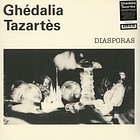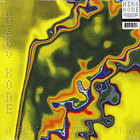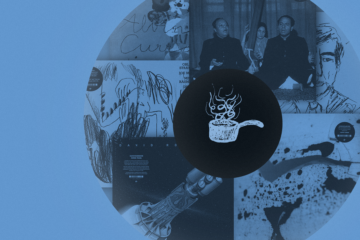Among the thousands and thousands of labels operating globally now, Dais Records still holds a special status, both in an aesthetic and historical sense. From industrial legends to postmodern rap combos, from darkwave to post-punk, electropop to noise their back catalogue consolidates a remarkable diversity under a consistent curation. Nothing to be taken for granted in times of cultural clearances on a large scale, especially not on such a high level of quality.
It all began with a morning call in 2007 when Gibby Miller reached out to his longtime friend Ryan Martin and proposed a somewhat spontaneous, but also matured thought: »We have all this material at our disposal, we have this network of music, we have the passion and drive, we should start a label«. The idea was in the cards earlier, but its execution was always a problem. Many people know that. At this point, Ryan Martin had already quite a standing and was well connected on the US east coast, earned his spurs in New York’s hardcore scene as a youngster and kept being curious about all kinds of music: leftfield sounds, art movements, experiments in the underground. Miller grew up not far away in Boston, where he gathered experience as shouter of well-respected bands like The Trouble or Panic, working together on creative projects with different people, then moving to L.A. to establish himself as a product designer and artist (i.a. Louderbach). It was in Winter 2002, when both got in closer contact through mutual friends, and in 2003 started trading records, DJing together, discussing ideas and formulating the groundwork for what would become Dais years later. Ideas and plans were all settled.
We are open to all music. Our only requirement is that we both love it.«
»We both had lists of albums we wanted other labels to reissue, and when Ryan discovered the acetate and tape for Early Worm (pre-Coum Transmissions Genesis P-Orridge project), we felt like this was as good a chance as any to start our own label give it a shot«, Gibby remembers during the interview. A word and a blow. Less than one year later the up until then practically unknown material was released on vinyl, with friendly approval by P-Orridge herself. Followed by the neofolk debut of Culf Of Youth, early EPs of darkwave combo Cold Cave and material from King Dude, but also new stuff from Psychic TV, silently reactivated by P-Orridge as PTV3. Aesthetics and scope of he label repertoire were already pretty much visible at this point, but still the tempo with which Miller and Martin were adding aspiring as well as established names to their label roster seemed unusual, to say the least. Dedicated to transgressive ideas and a certain darker take on the cultural status quo, very much en vogue in the early 80s as well, Dais became a safe bank for soundscapes that could score raves in ramshackled power plants as easily as BDSM clubs or wicca rituals in the woods.
Among them not only recent records by Aaron Dilloway, Ragnar Grippe, Tor Lundvall, Drew McDowall or Hiro Kone. When it comes to gems from the past, the focus of Dais right from the get go lay on criminally underrated material as well, born in the outskirts of experimental fringe music. Where reissues of Robert Turman’s industrial classic »Way Down« (1987) and the colossal »Will« (1983) by Hunting Lodge were as needed as they were beautifully made, more obscure sounds found their way onto wax too. Take the strange spoken word recordings from the late William S. Burroughs on »Nothing Here Now But The Recordings« (1981) or the essential Coil reissues, which would still be absurdly expensive Discogs prey if Dais would not had taken care of »Time Machines« (2017), »Black Light District« (2018), »Worship The Glitch« (2018) and »Musick To Play In The Dark Vol. 1« (2020) in equally competent and loving detail work. »The biggest challenge was meeting the expectations of the fans, musically and visually«, Gibby says. »We learned a lot from the experience and I think (and hope!) people were pleased with the release. Josh Bonati always does an impeccable job mastering, and we spent a LOT of time on the artwork. We had the original software renderings as well as original art files«, he concludes. »The biggest obstacle is meeting people’s expectations, some of which are realistic and others, outlandish. Glad to see overall, the response has been positive«, Ryan adds.
Probably also because the two are managing their own label like some sort of collection that doesn’t follow any specific rules, but is more led through intuitive curation – just like a record collector does with his personal archives over the years. That is also why contemporary releases in the Dais catalogue fit so well with reissues that come out during roughly the same time, whether intended or not. »Regardless of genre, our reissues sometimes (whether intended or not) align sonically with our recent artists work, yes. For example our reissue of Tim Story »Threads« could comfortably be played next to last year’s Rafael Anton Irissari or Tor Lundvall releases! This touches on what I said about everything fitting into a sort of »collection« that makes sense. We have no hard rules about curation. We are open to all music. Our only requirement is that we both love it.«











